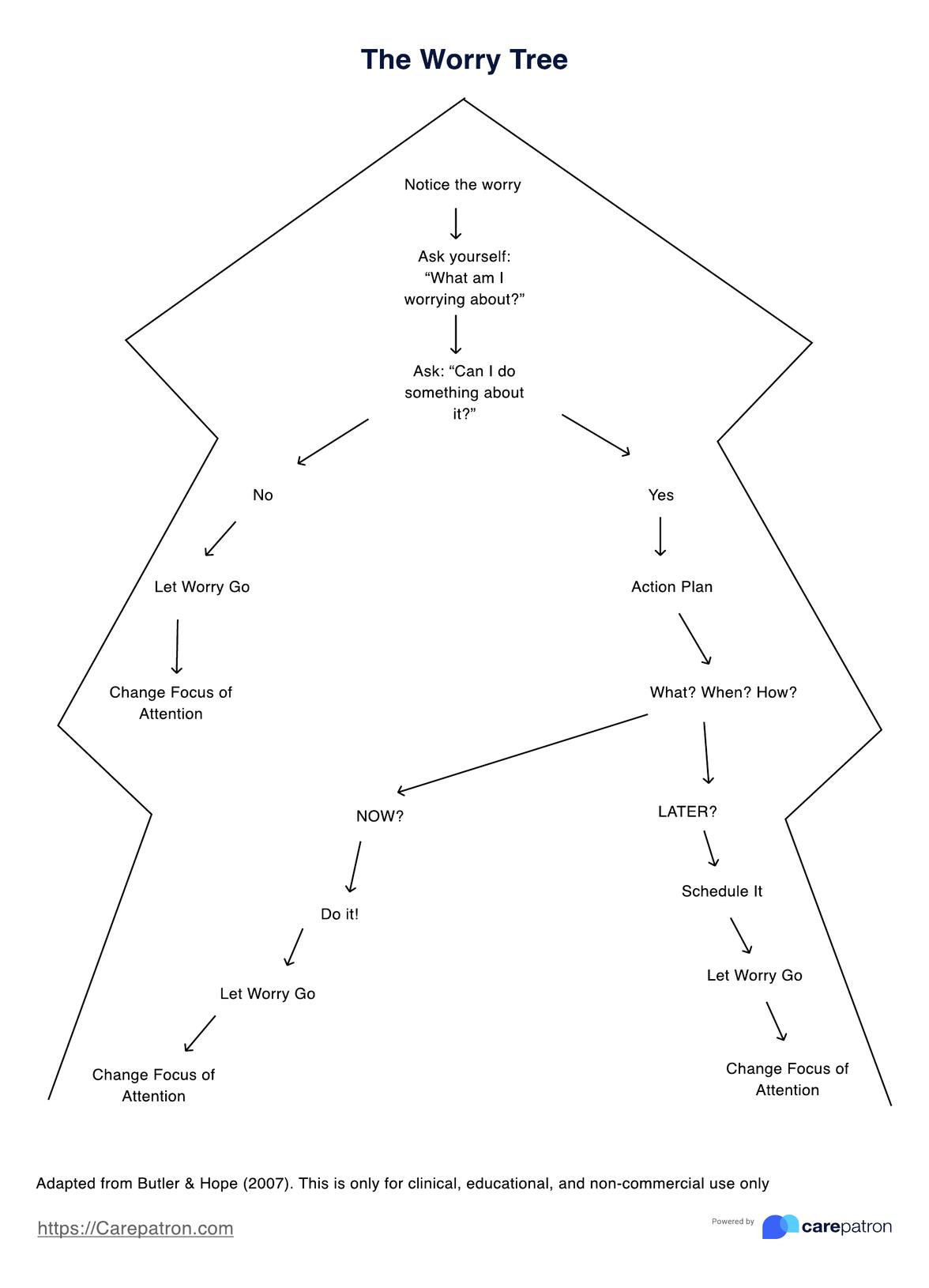No. It’s a technique that is accompanied by a visual so that patients can get the idea on how they should approach their worries. However, for our template, we turned it into a worksheet of sorts by adding another page where you and your patients can write down action plans.

Worry Tree
Teach your CBT patient the Worry Tree technique to help them process their worries and work through them by changing their focus or taking action.
Use Template
Worry Tree Template
Commonly asked questions
That depends on the patient. The Worry Tree has a portion that asks if you can push through with your plan of action now or later. It’s also not a test. The Worry Tree is just a way to structure what patients can do regarding their worries. They can use it anytime, especially during times of distress.
Gillian Butler and Tony Hope created the Worry Tree back in 2007.
EHR and practice management software
Get started for free
*No credit card required
Free
$0/usd
Unlimited clients
Telehealth
1GB of storage
Client portal text
Automated billing and online payments











